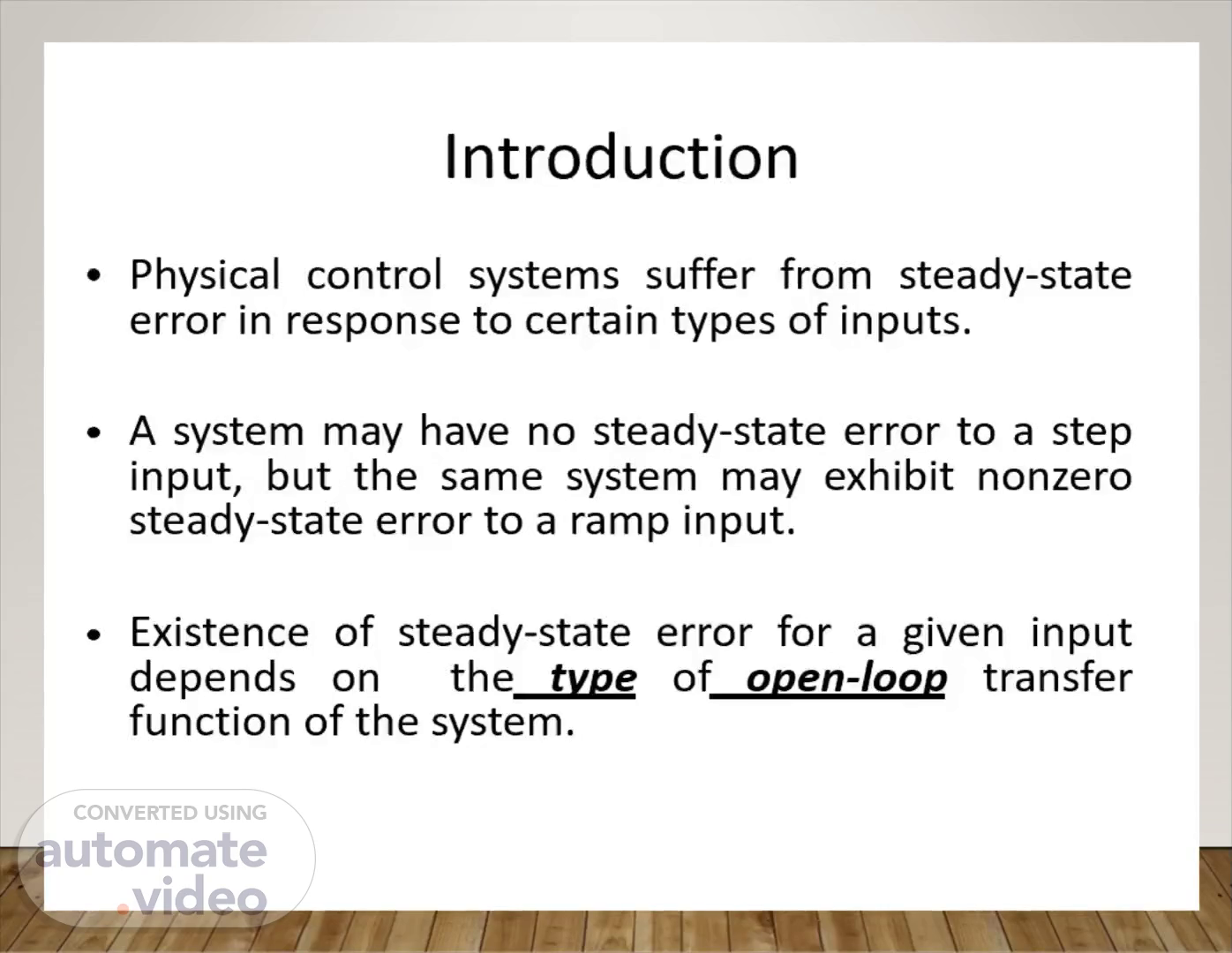
351_27435_EE418_2015_1__1_1_Lec6 steady_state_error (1).pdf
Scene 2 (5m 0s)
Introduction. Physical control systems suffer from steady-state error in response to certain types of inputs. A system may have no steady-state error to a step input, but the same system may exhibit nonzero steady-state error to a ramp input. Existence of steady-state error for a given input depends on the type of open-loop transfer function of the system..
Scene 3 (5m 18s)
General error signal for any feedback.
Scene 4 (5m 25s)
System Type. t h e o p e n - l o o p T F. w i t h a un i t y-.
Scene 5 (5m 42s)
Steady State Error of Unity Feedback Systems. Consider the system shown in following figure..
Scene 6 (5m 53s)
Steady State Error of Unity Feedback Systems. The transfer function between the error signal E(s) and the input signal R(s) is The final-value theorem provides a convenient way to find the steady-state performance of a stable system. Since E(s) is The steady state error is.
Scene 7 (6m 9s)
Static Position Error Constant (K p ). The steady-state error for a unit-step input is.
Scene 8 (6m 24s)
Static Position Error Constant ( K p ). For a Type 0 system.
Scene 9 (6m 35s)
The steady-state error of the system for a unit-ramp input is.
Scene 10 (6m 50s)
Static Velocity Error Constant (K v ). For a Type 0 system.
Scene 11 (7m 0s)
Static Velocity Error Constant ( K v ). For a ramp input the steady state error e ss is.
Scene 12 (7m 9s)
The steady-state error of the system for parabolic input is.
Scene 13 (7m 25s)
Static Acceleration Error Constant (K a ). For a Type 0 system.
Scene 14 (7m 36s)
Static Acceleration Error Constant ( K a ). For a parabolic input the steady state error e ss is.
Scene 15 (7m 45s)
S u mm a r y.
Scene 16 (7m 51s)
Example 1. For the system shown in figure below evaluate the static error constants and find the expected steady state errors for the standard step, ramp and parabolic inputs..